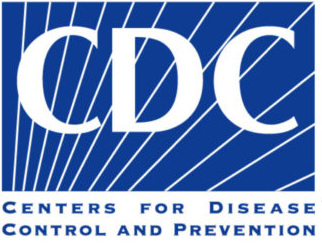- Details
- Hits: 3846
Check here to see if your state have legislation protecting pain patients and prescribers?
Want tips on how to contact your local legislator to start on the process of getting legislation passed in your state? Click this link for a webinar from a Congressional staffer and a sample letter along with tips!
- Details
- Hits: 2666
This document was created by Federation of State Medical Boards (FSMB) - updated January 2023
State Opioid/Pain Management Related CME Requirements - FSMB
- Details
- Hits: 2136
This document was created by the Federation of State Medical Boards -updated in 2023
- Details
- Hits: 1860
This information is created by and updated by TTAC - Check this website for proposed PDMP state legislation
Compilation of PDMP statutes and regulations by topic through Q1 2023
- Details
- Hits: 1680
This document was created by Federation of State Medical Boards - updated January 2023
- Details
- Hits: 2097
This document was created by the Network for Public Health Law in 2021
Laws limiting prescribing or dispensing of opioids - Network for Public Health Law
- Details
- Hits: 2233
This document was created by the Federation of State Medical Boards (2022) in 2022.
State Pain Management Policies - Board by board overview - FSMB
- Details
- Hits: 1953
State Opioid Policies - board by board overview by FSMB
This document was created in 2019 by the Federation of State Medical Boards
- Details
- Hits: 1904
Link to document - 2022 CDC Guidelines
Summary
"This guideline provides recommendations for clinicians providing pain care, including those prescribing opioids, for outpatients aged ≥18 years. It updates the CDC Guideline for Prescribing Opioids for Chronic Pain — United States, 2016 (MMWR Recomm Rep 2016;65[No. RR-1]:1–49) and includes recommendations for managing acute (duration of <1 month), subacute (duration of 1–3 months), and chronic (duration of >3 months) pain. The recommendations do not apply to pain related to sickle cell disease or cancer or to patients receiving palliative or end-of-life care. The guideline addresses the following four areas: 1) determining whether or not to initiate opioids for pain, 2) selecting opioids and determining opioid dosages, 3) deciding duration of initial opioid prescription and conducting follow-up, and 4) assessing risk and addressing potential harms of opioid use. CDC developed the guideline using the Grading of Recommendations Assessment, Development, and Evaluation (GRADE) framework. Recommendations are based on systematic reviews of the scientific evidence and reflect considerations of benefits and harms, patient and clinician values and preferences, and resource allocation. CDC obtained input from the Board of Scientific Counselors of the National Center for Injury Prevention and Control (a federally chartered advisory committee), the public, and peer reviewers. CDC recommends that persons with pain receive appropriate pain treatment, with careful consideration of the benefits and risks of all treatment options in the context of the patient’s circumstances. Recommendations should not be applied as inflexible standards of care across patient populations. This clinical practice guideline is intended to improve communication between clinicians and patients about the benefits and risks of pain treatments, including opioid therapy; improve the effectiveness and safety of pain treatment; mitigate pain; improve function and quality of life for patients with pain; and reduce risks associated with opioid pain therapy, including opioid use disorder, overdose, and death."
Recommendation 1
Nonopioid therapies are at least as effective as opioids for many common types of acute pain. Clinicians should maximize use of nonpharmacologic and nonopioid pharmacologic therapies as appropriate for the specific condition and patient and only consider opioid therapy for acute pain if benefits are anticipated to outweigh risks to the patient. Before prescribing opioid therapy for acute pain, clinicians should discuss with patients the realistic benefits and known risks of opioid therapy (recommendation category: B; evidence type: 3).
Recommendation 2
Nonopioid therapies are preferred for subacute and chronic pain. Clinicians should maximize use of nonpharmacologic and nonopioid pharmacologic therapies as appropriate for the specific condition and patient and only consider initiating opioid therapy if expected benefits for pain and function are anticipated to outweigh risks to the patient. Before starting opioid therapy for subacute or chronic pain, clinicians should discuss with patients the realistic benefits and known risks of opioid therapy, should work with patients to establish treatment goals for pain and function, and should consider how opioid therapy will be discontinued if benefits do not outweigh risks (recommendation category: A; evidence type: 2).
Recommendation 3
When starting opioid therapy for acute, subacute, or chronic pain, clinicians should prescribe immediate-release opioids instead of extended-release and long-acting (ER/LA) opioids (recommendation category: A; evidence type: 4).
Recommendation 4
When opioids are initiated for opioid-naïve patients with acute, subacute, or chronic pain, clinicians should prescribe the lowest effective dosage. If opioids are continued for subacute or chronic pain, clinicians should use caution when prescribing opioids at any dosage, should carefully evaluate individual benefits and risks when considering increasing dosage, and should avoid increasing dosage above levels likely to yield diminishing returns in benefits relative to risks to patients (recommendation category: A; evidence type: 3).
Recommendation 5
For patients already receiving opioid therapy, clinicians should carefully weigh benefits and risks and exercise care when changing opioid dosage. If benefits outweigh risks of continued opioid therapy, clinicians should work closely with patients to optimize nonopioid therapies while continuing opioid therapy. If benefits do not outweigh risks of continued opioid therapy, clinicians should optimize other therapies and work closely with patients to gradually taper to lower dosages or, if warranted based on the individual circumstances of the patient, appropriately taper and discontinue opioids. Unless there are indications of a life-threatening issue such as warning signs of impending overdose (e.g., confusion, sedation, or slurred speech), opioid therapy should not be discontinued abruptly, and clinicians should not rapidly reduce opioid dosages from higher dosages (recommendation category: B; evidence type: 4).
Recommendation 6
When opioids are needed for acute pain, clinicians should prescribe no greater quantity than needed for the expected duration of pain severe enough to require opioids (recommendation category: A; evidence type: 4).
Recommendation 7
Clinicians should evaluate benefits and risks with patients within 1–4 weeks of starting opioid therapy for subacute or chronic pain or of dosage escalation. Clinicians should regularly reevaluate benefits and risks of continued opioid therapy with patients (recommendation category: A; evidence type: 4).
Recommendation 8
Before starting and periodically during continuation of opioid therapy, clinicians should evaluate risk for opioid-related harms and discuss risk with patients. Clinicians should work with patients to incorporate into the management plan strategies to mitigate risk, including offering naloxone (recommendation category: A; evidence type: 4).
Recommendation 9
When prescribing initial opioid therapy for acute, subacute, or chronic pain, and periodically during opioid therapy for chronic pain, clinicians should review the patient’s history of controlled substance prescriptions using state prescription drug monitoring program (PDMP) data to determine whether the patient is receiving opioid dosages or combinations that put the patient at high risk for overdose (recommendation category: B; evidence type: 4).
Recommendation 10
When prescribing opioids for subacute or chronic pain, clinicians should consider the benefits and risks of toxicology testing to assess for prescribed medications as well as other prescribed and nonprescribed controlled substances (recommendation category: B; evidence type: 4).
Recommendation 11
Clinicians should use particular caution when prescribing opioid pain medication and benzodiazepines concurrently and consider whether benefits outweigh risks of concurrent prescribing of opioids and other central nervous system depressants (recommendation category: B; evidence type: 3).
Recommendation 12
Clinicians should offer or arrange treatment with evidence-based medications to treat patients with opioid use disorder. Detoxification on its own, without medications for opioid use disorder, is not recommended for opioid use disorder because of increased risks for resuming drug use, overdose, and overdose death (recommendation category: A; evidence type: 1).















